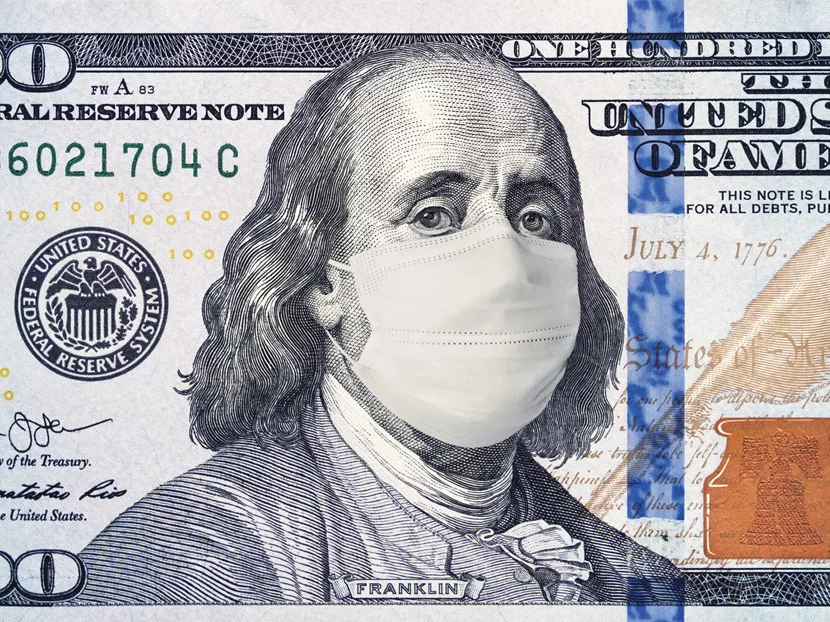A mere decade ago, banks persevered through a severe recession and widespread loan defaults. Until 2015, they endured years of ultra-low interest rates and slow loan growth that undercut their popularity.
In 2015, 2018 and more recently, they survived sell-offs in the stock market. This was followed by a collapse in energy prices: more setbacks, but at least more big banks.
Now, as this is written, banks face all those threats simultaneously. With adverse reactions from individual businesses, their previous strength, it reflects the instability that thousands of small businesses are facing. While facing growth and rising unemployment can dent bank projects, sharp drops in asset prices, such as oil, can drop their investment banking revenues as deal activity and investors hold back.
While banks entered 2020 better capitalized and less reliant on continued short-term funding than on the eve of the 2008-11 financial crisis, their earnings have been headed south. The current fear of the impact of COVID-19 coronavirus has erased all the benefit generators by the first two years of President Donald Trump’s “Make America Great Again” programs.
Leading banks such as the Bank of America warned clients that “forthcoming economic reversals” could severely reverse their prospects. Additionally, some of these investors have hoped to benefit from stock market investment performance. But mid-March saw the worst drop since 1987; it has caused profit-generating equities to be riskier than ever. At the same time, stock had tumbled into a bear market while treasurer’s yields have slid to record lows.
Thanks to the disruption of short-term funding availability, securities dealers could be left with $300 billion of 30-year treasury on their books. Their ultimate public sale could cause U.S. Treasury yields to rise sharply again, further disrupting those formerly steady investments to become shakier than ever.
Banks have become more conservative in extending credit to consumers since the Great Recession. But even this conservatism can worsen at any time. Banks have been reducing the reserves they previously set aside to cover ongoing defaults, but in a shaky economy, these problems could expand quickly.
Even if consumers keep paying back their loans, their expenditures on small luxuries could quickly lessen their need for additional loans. Banks could face another potential negative — piled on to the financial crisis problems they have been facing intermittently.
Climatology and U.S. Oil Production
When the United States hit the world’s all-time high oil production threshold in 2014-15, it looked as if the pipe-valves-fittings industry could expect a significant expansion in U.S. domestic energy needs, as well as massive exports, as “fracking” was setting new records in oil and gas production.
As the 21st century moved underway, it seemed that America was finally reversing imports to exports. It was taking the need for thousands of PVF products right along with world leadership in oil and gas. This was especially true in Texas, which houses the Permian and Eagle Ford basins; and such smaller fields in North Dakota, Montana, Colorado, Wyoming, etc.
Unfortunately, the global fear of climatological disaster has had the United Nations put the world on notice that massive energy production for yesterday and today would have to reduce “shale” down to near zero by mid-century.
It already has drastically reduced employment levels, as well as side-tracking existing expansion plans. What America was viewing as a major industrial bonanza only a few years ago has become the fastest downgrade of expansion, and maintenance, ever witnessed.
While Saudi Arabia, the previous oil/gas world leader, is arranging to broaden its economic developments, and Russia is for not ignoring it, the world-at-large is hardly cooperating with the UN climatological orders. China, whose cities are immersed in smoke, seems to have taken the position that as “economic late-comers,” they should be given more time. Russia knows its fixed pipelines into most European nations give it a monopoly on oil-and-gas shipments.
While shale cutback is still in its early stages, the Trump administration has given notice it is not satisfied with the frantic rush to oil-and-gas reductions. With an eye on the November presidential election, President Trump has indicated that oil-and-gas extinction lies far into the future. And as he has so stated, he is waiting to see what other major oil and gas producers are willing to do. President Trump cites China and its climatological frivolousness.
Unfortunately, the U.S. Big Five oil companies can’t afford such “anticipation luxury” and have moved “helter-skelter” on the comeback trail. However, they are cutting back on such major fields as the giant Texas Permian basin.





